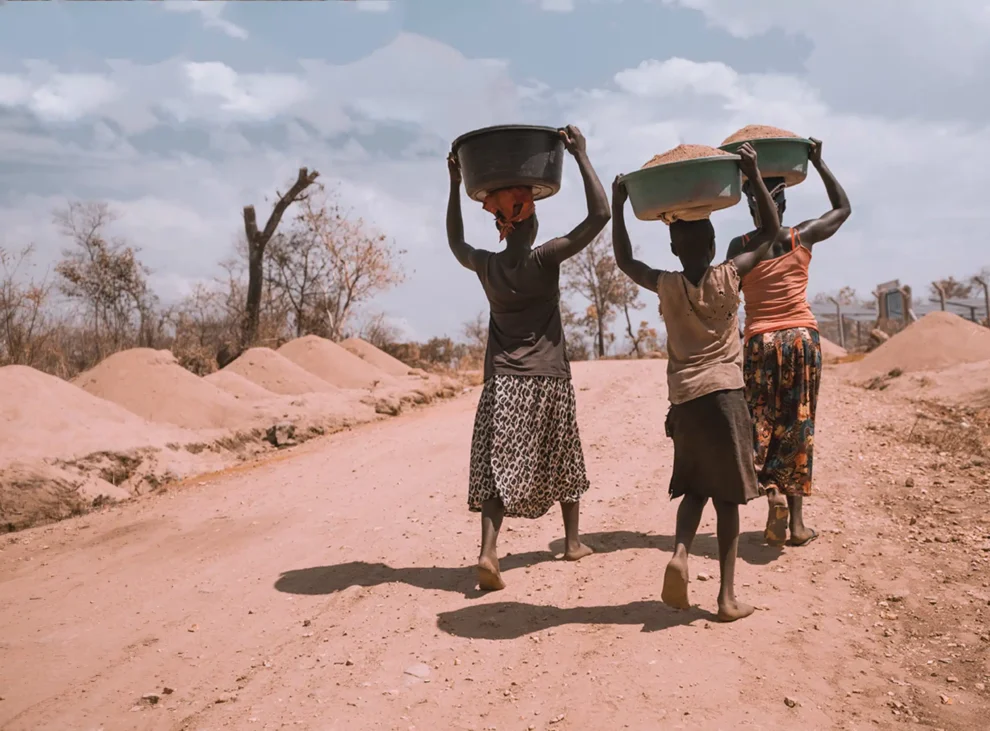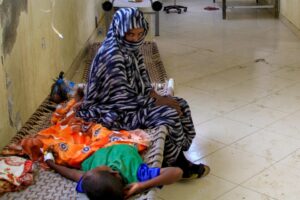Uganda is an inland country in East Africa. Known as the “Pearl of Africa,” it is renowned for its natural diversity, boasting stunning mountains, lakes and rivers. However, despite Uganda’s rich water resources, some 38 million Ugandan people — or 83% of the country’s population — do not have reliable access to clean, safe drinking water. In an interview with The Borgen Project, Nick Jordan, founder of the Uganda-based nonprofit Wells of Life, provided insight into the water crisis in Uganda and the organization’s efforts to tackle it.
The Water Crisis in Uganda
Wells of Life estimates that people in Uganda must travel an average of three to four miles, or four to five hours, daily to locate water sources. As a result of the scarcity, the country is rife with unsanitary water and waterborne illnesses, including cholera, diarrhea and malaria. Exemplifying the problem, an estimated 89,000 Ugandan people, the majority children, contract cholera each year, resulting in about 3,000 deaths annually.
In response to the water crisis in Uganda, numerous international organizations have been working to protect and improve valuable water resources across the country. Among them, Wells of Life, founded in 2008, has been building wells to bring clean, safe water to some 1.1 million people living in Uganda’s poorest rural regions.
A Hopeful Beginning
In 1986, Jordan immigrated from Ireland to the United States, where he founded a real estate company called Jordan Property Group in America. Through that venture, he raised around $600,000 with the intention of building four schools in East Africa, visiting prospective sites in three countries, including Uganda. “But when I went to Uganda, there was a big culture shock,” Jordan said. “I experienced poverty for the first time.”
Though he had gone to Uganda hoping to bring educational resources to children, Jordan was struck by the lack of an even more basic resource — water. “Every 21 seconds a child dies” due to the water crisis in Uganda, “when water is just there, fifty feet underneath the ground,” he explained. Furthermore, he “noticed that there were less girls attending schools than boys, and it didn’t take long to figure it out…the girls are required to haul water.”
Frustrated but inspired by the many disparities he saw, Jordan shifted focus and established Wells of Life to tackle what he believes is one of poverty’s deeper root causes.
Wells of Life’s Work
Founded on the idea that local wells offer a practical and sustainable solution to the water crisis in Uganda, Wells of Life constructed its first well in 2010. The cost to drill a well is around $8,000 and each well can serve about 1,000 people, Jordan said.
Wells of Life uses stainless steel materials to construct its borehole wells, which can function for up to 25 years. As of July 2023, the organization has built 804 wells that are providing water for more than 804,000 people, according to Jordan. It has also repaired or restored 321 abandoned wells, allowing an additional 321,000 people to regain access to safe, reliable water sources. In the process, Jordan added, Wells of Life’s work has helped reduced infant mortality rates in its coverage areas by about 50%.
The Healthy Village Program
Still, Jordan recognizes that drilling wells alone won’t solve the problem. Four years ago, Wells of Life launched a water, sanitation and hygiene (WASH) initiative called the Healthy Village Program. The program provides essential knowledge and tools related to clean water, proper sanitation and hygiene to foster long-standing community development. “The long-lasting catalyst for change has to be education,” Jordan explained.
Thus, the six-month program centers on visiting each household in a village to teach residents about safe hygiene practices, including water container disinfection and proper cooking methods. It also introduces private toilets and bathing facilities, which are particularly important for protecting the privacy of mothers and daughters. So far, the program has covered 65 communities, with hopes of eventually reaching every village in Uganda.
The Biggest Challenge
To date, Wells of Life has raised about $14.8 million. While the organization receives large donations, the majority of funding comes from smaller $20-$50 donations, Jordan said. As he sees it, the biggest challenge now is making people realize the difference that even a small contribution can make.
Jordan hopes to inspire others by highlighting how much a single well changes lives. For example, in 2020, donor Rand Sperry generously funded a well in Uganda’s Mityana district to honor the late basketball player Kobe Bryant and his daughter, Gianna Bryant. The well provided villagers with clean water for the first time in nearly 60 years, saving the lives of hundreds. “What’s the most touching is that there’s a joyful, happy, and abundant group of over 1,000 people that sing praises to Kobe as a commemoration,” Jordan said.
On the Road
“Lack of water is really the tap root of poverty. And when there’s no clean water, it’s very difficult to have a life that’s sustainable,” Jordan summarized. Yet, “when you provide a well in a community, you instantly change the landscape, health, hope and opportunity of that community.”
Wells of Life is preparing to build a 15,000-square-foot campus in Uganda to serve as its headquarters, training center and visitor conference center. Jordan anticipates that construction will commence in the next one to two years. He hopes the project will help people see that every drop of water counts.
Source: Borgen Magazine
















